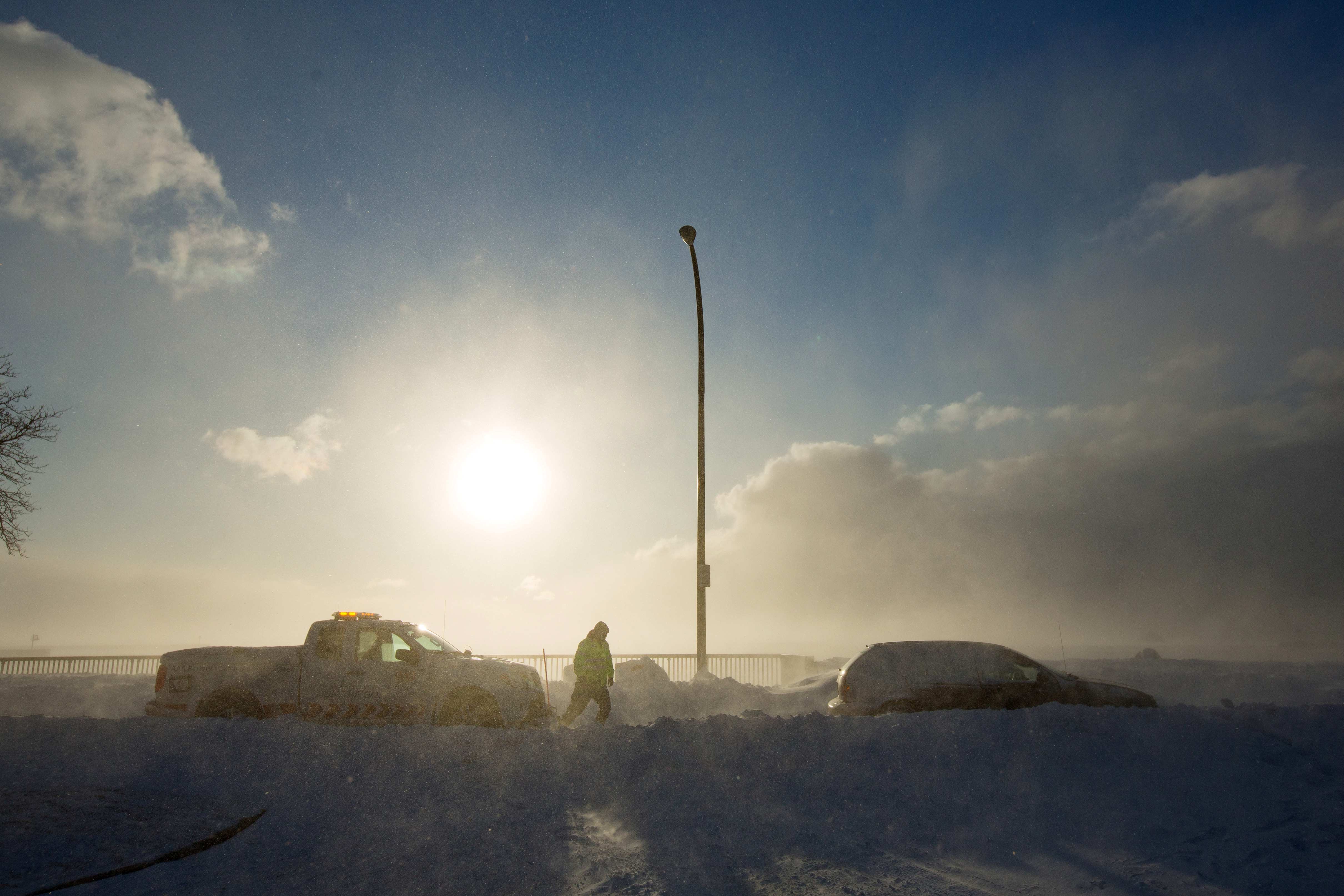
(Reuters) – Winter weather battered the United States from coast to coast on Thursday as a series of storms expected to last for days mixed with an arctic air mass to bring snow and freezing rain as far south as Texas where there was a deadly multi-vehicle pileup.
A line of freezing rain stretched from Texas to West Virginia, with some of it accumulating one-quarter to one-half inch, according to meteorologist Marc Chenard at the National Weather Service’s Weather Prediction Center in College Park, Maryland.
Among the areas to get a coating of freezing rain during the Thursday morning rush hour was Fort Worth, Texas, where local media reported that at least five people were killed in a massive pileup of some 70 vehicles on an interstate highway.
Video at the scene showed dozens of smashed cars and trucks, some literally piled on top of one another on a wet roadway and under cloudy skies.
The Texas precipitation was part of a system that was bringing rain to several southeastern states and modest amounts of snow to West Virginia, Maryland and New Jersey, but was winding down, Chenard said.
A separate system will make its presence felt in the mid-Atlantic area on Saturday, he said.
“That may bring potentially significant freezing rain accumulations to portions of Virginia and Maryland,” he added.
Meanwhile, another weather system was making its way into the Pacific Northwest where it was forecast to remain through Saturday and bring as much eight inches (20 cm) of snow to normally rainy Seattle and 12 inches (30 cm) to Portland, Oregon. Seattle averages about 6 inches of snow in an entire winter season.
“An event of this magnitude is rare,” said Chenard.
That weather system is forecast to make its way eastward, bringing significant snowfall to the upper Midwest over the weekend and freezing rain south almost to Gulf Coast of Texas.
“There likely will be winter weather impacts in the East by early next week,” Chenard added.
The storm systems, which normally would have brought rain, have been converted into snow and ice makers by a polar air mass that has descended upon much of the country, bringing frigid temperatures before beginning to recede in the middle of next week, Chenard said.
Recent low temperatures in the upper United States from Montana to Wisconsin have ranged from minus 35 to minus 40 degrees Fahrenheit (minus 37 to minus 40 degrees Celsius).
(Reporting by Peter Szekely in New York; Editing by Bernadette Baum)




